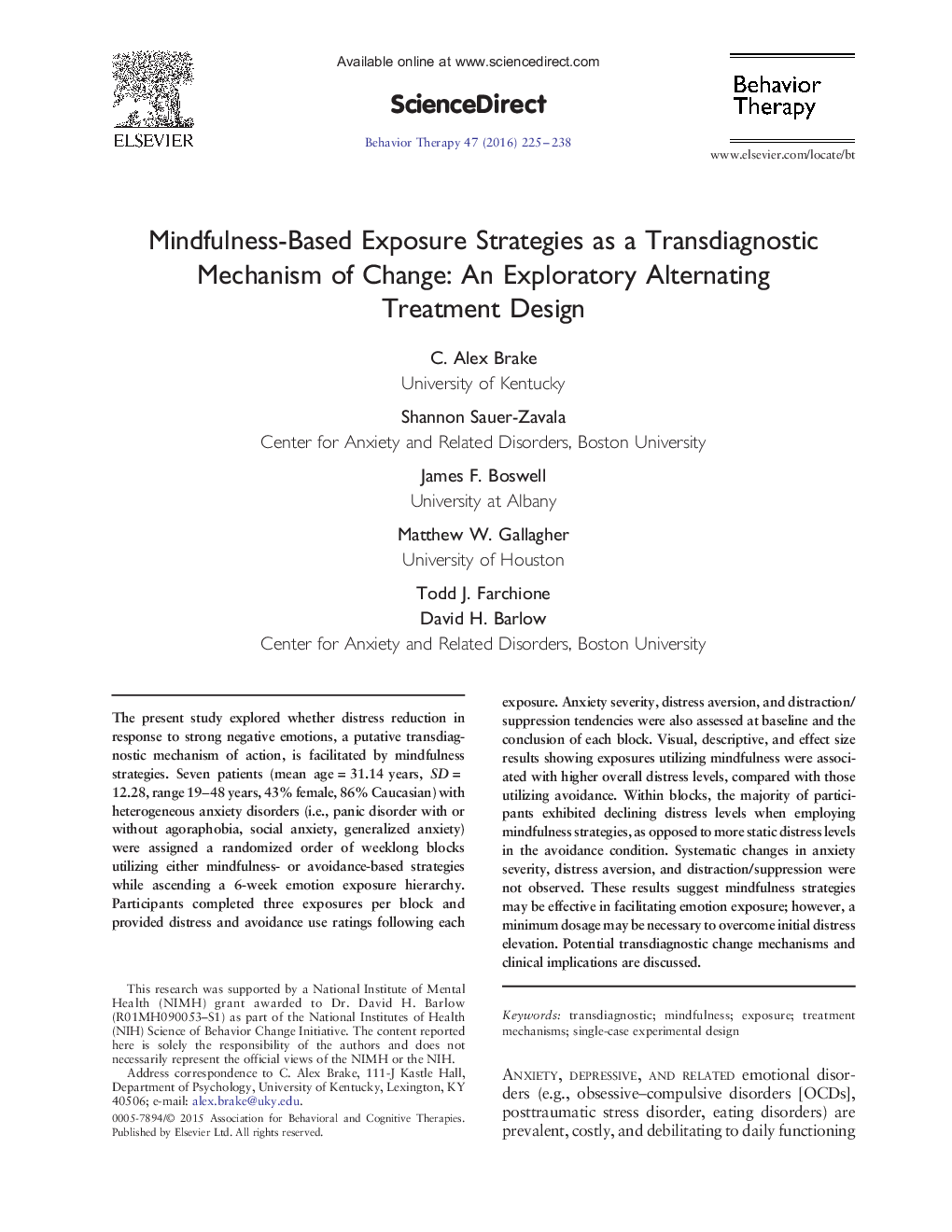| Article ID | Journal | Published Year | Pages | File Type |
|---|---|---|---|---|
| 901188 | Behavior Therapy | 2016 | 14 Pages |
•We explore whether transdiagnostic distress reduction is facilitated by mindfulness.•We compare intrasubject mindful versus avoidance strategies during exposures.•Mindful strategies are associated with higher yet declining distress levels.•Mindful strategies may be effectively applied in treatment of emotional disorders.•Results suggest mindfulness practice and duration may be relevant for maximal effect.
The present study explored whether distress reduction in response to strong negative emotions, a putative transdiagnostic mechanism of action, is facilitated by mindfulness strategies. Seven patients (mean age = 31.14 years, SD = 12.28, range 19–48 years, 43% female, 86% Caucasian) with heterogeneous anxiety disorders (i.e., panic disorder with or without agoraphobia, social anxiety, generalized anxiety) were assigned a randomized order of weeklong blocks utilizing either mindfulness- or avoidance-based strategies while ascending a 6-week emotion exposure hierarchy. Participants completed three exposures per block and provided distress and avoidance use ratings following each exposure. Anxiety severity, distress aversion, and distraction/suppression tendencies were also assessed at baseline and the conclusion of each block. Visual, descriptive, and effect size results showing exposures utilizing mindfulness were associated with higher overall distress levels, compared with those utilizing avoidance. Within blocks, the majority of participants exhibited declining distress levels when employing mindfulness strategies, as opposed to more static distress levels in the avoidance condition. Systematic changes in anxiety severity, distress aversion, and distraction/suppression were not observed. These results suggest mindfulness strategies may be effective in facilitating emotion exposure; however, a minimum dosage may be necessary to overcome initial distress elevation. Potential transdiagnostic change mechanisms and clinical implications are discussed.
